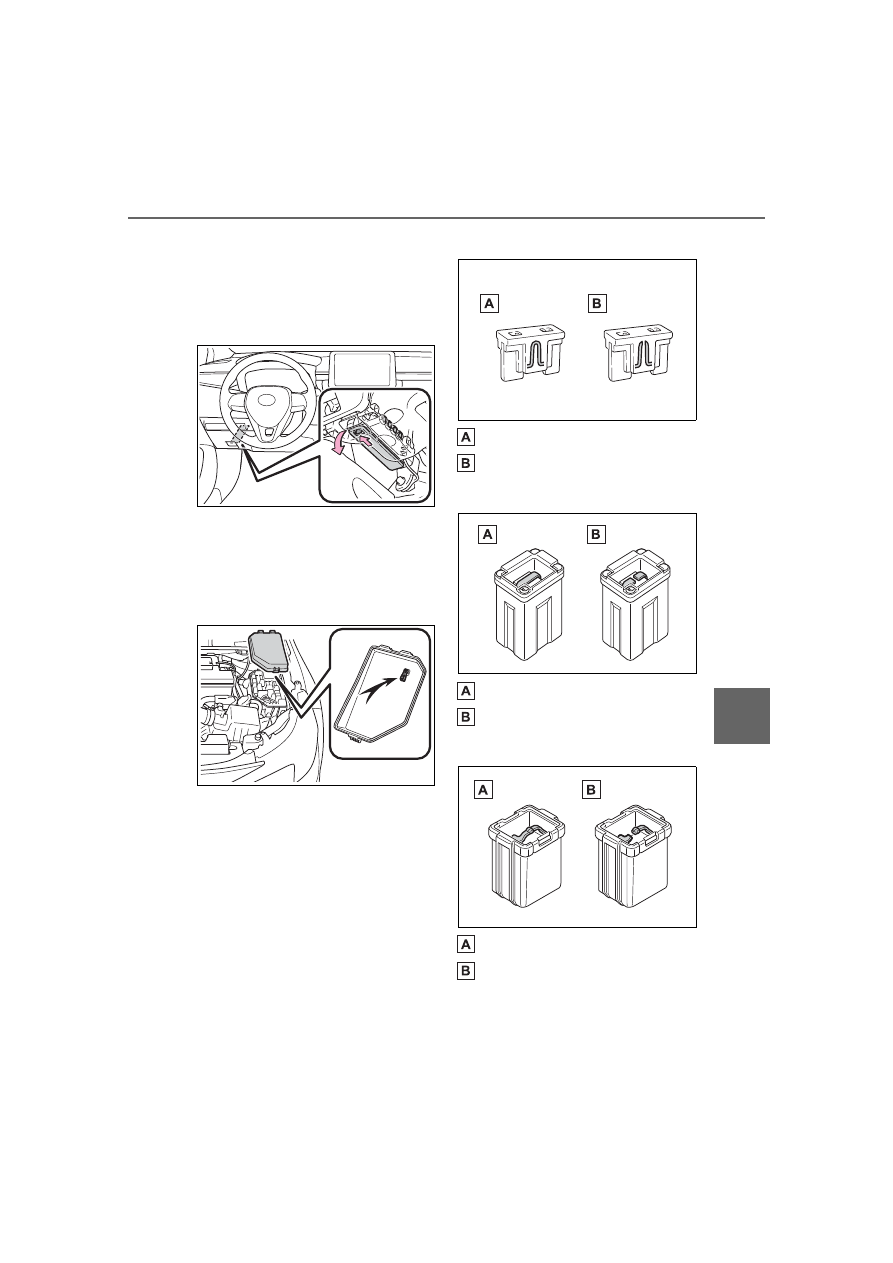Toyota Corolla Hatchback (2022 year). Manual in english - page 28

455
7-3. Do-it-yourself maintenance
7
Maintena
nce
a
nd ca
re
Under the driver’s side instru-
ment panel
Remove the lid.
Make sure to push the claw when
removing/installing the lid.
3
Remove the fuse with the
pullout tool.
Only type A fuse can be
removed using the pullout
tool.
4
Check if the fuse is blown.
Replace the blown fuse with a new
fuse of an appropriate amperage
rating. The amperage rating can be
found on the fuse box lid.
Type A
Normal fuse
Blown fuse
Type B
Normal fuse
Blown fuse
Type C
Normal fuse
Blown fuse